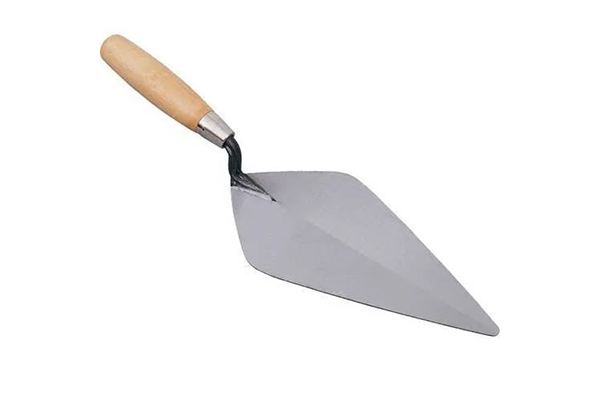A hand trowel is a versatile tool used for various tasks, primarily in construction, gardening, and DIY projects. It consists of a flat, blade-like metal head attached to a handle. The blade is typically made of steel or stainless steel and can be smooth or serrated, depending on its intended use.
Common Uses of a Hand Trowel:
-
Construction:
- Plastering: Applying and smoothing plaster or mortar onto walls and ceilings.
- Grouting: Filling gaps between tiles with grout.
- Bricklaying: Spreading mortar to bond bricks together.
- Concrete Work: Shaping and smoothing fresh concrete.
-
Gardening:
- Planting: Digging small holes for planting seeds and seedlings.
- Weeding: Removing weeds from garden beds.
- Transplanting: Moving plants from one location to another.
- Soil Preparation: Mixing soil amendments and fertilizers.
-
DIY Projects:
- Mortar Mixing: Mixing small batches of mortar for repair work.
- Tile Installation: Applying adhesive to tiles and backsplashes.
- Grouting Tile: Filling gaps between tiles with grout.
- Patching Holes: Filling small holes in walls and ceilings with plaster or drywall compound.

Types of Hand Trowels:
- Plasterer’s Trowel: This type of trowel has a long, flexible blade that is ideal for applying and smoothing plaster.
- Mason’s Trowel: A sturdy trowel with a shorter, stiffer blade, perfect for bricklaying and concrete work.
- Pointing Trowel: A small, triangular trowel used for pointing mortar joints in brickwork and masonry.
- Garden Trowel: A smaller, curved trowel with a pointed tip, designed for planting and weeding.
Choosing the Right-Hand Trowel:
When selecting a hand trowel, consider the following factors:
- Blade Size: The size of the blade should be appropriate for the task at hand.
- Blade Material: Stainless steel blades are more durable and resistant to corrosion.
- Handle Material: Wooden handles provide a comfortable grip, while fiberglass handles are more durable and water-resistant.
- Blade Shape: The shape of the blade can influence the tool’s performance. A pointed tip is ideal for digging, while a flat blade is better for spreading materials.
By understanding the different types of hand trowels and their specific uses, you can choose the right tool for your project and achieve professional results.
Post time: 11月-13-2024






